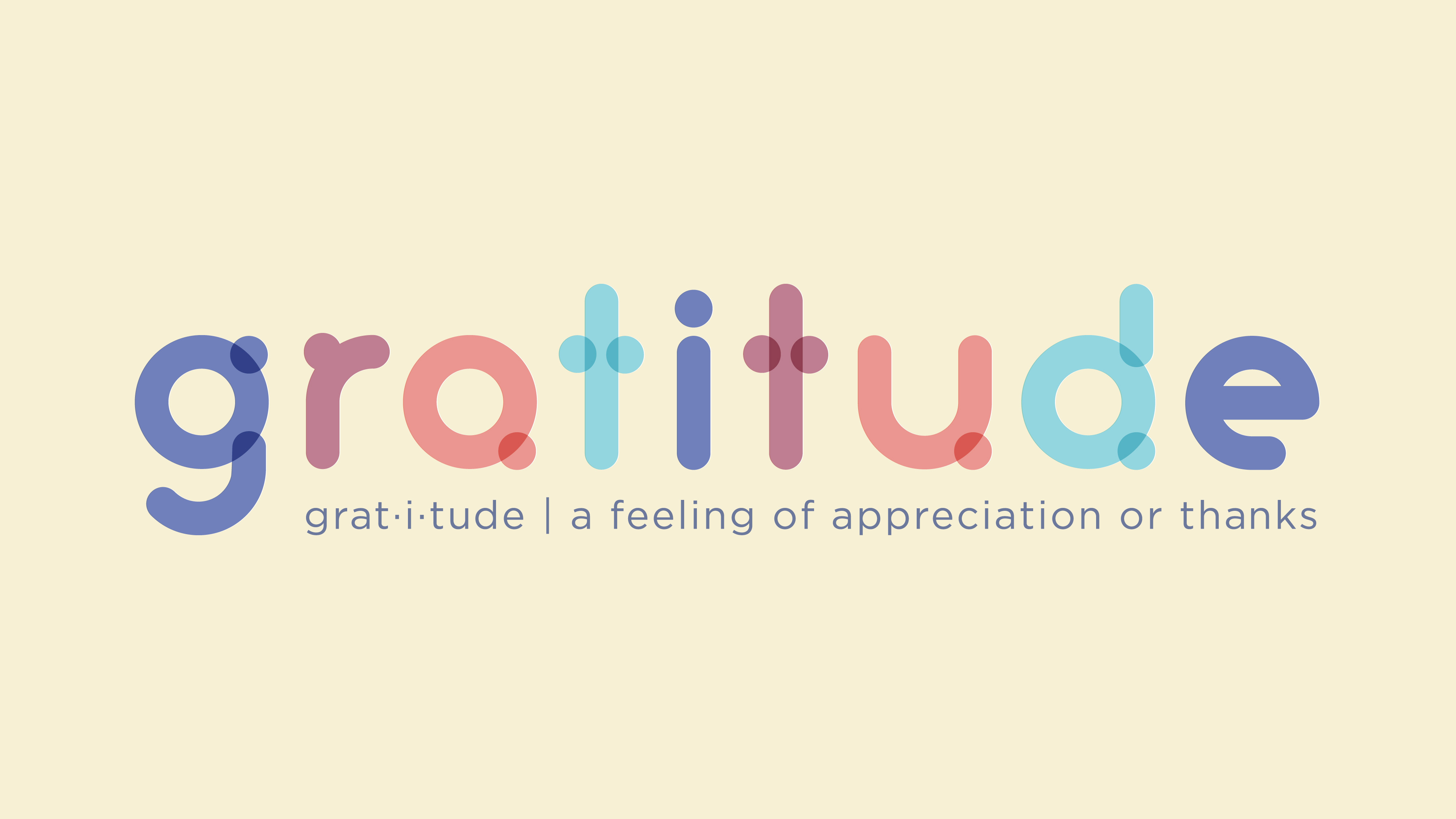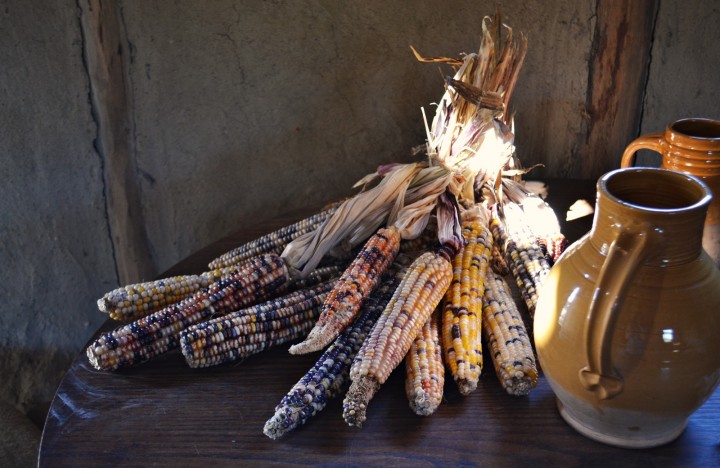Holidays
Category
The Health Benefits of a Gratitude Attitude…and 5 Tips to become more Grateful
Everyone knows that managing stress is important for your physical and mental wellness. Many people follow advice such as working out, getting enough sleep, practicing relaxation techniques, and spending time with family and friends. Cultivating an attitude of gratitude is another way to manage stress.

There are seven scientifically proven benefits of gratitude, according to researchers, including improved physical and psychological health, better sleep patterns and increased mental strength. Other sources report grateful people eat healthier, have more energy and have stronger immune systems.
It’s not always easy to be grateful. Here are five strategies to develop a “gratitude attitude.”
- Keep a gratitude journal. Be specific when you write down what you’re grateful for. Reading back through your journal is a good way to remember your blessings when you’re going through tough times.
- Be appreciative of others. Make a practice of saying thank you and expressing appreciation towards others. This makes you and the other person feel good.
- Be mindful. When you’re tempted to complain or fret, take a moment to look for the positive aspects of the situation. For example, if you’re involved in a minor car accident, be grateful no one was injured instead of focusing on the damage and inconvenience.
- Help others. Volunteering creates a sense of gratitude through giving to those who are less fortunate or in need, and reminds us of the things we take for granted.
- Express yourself. Look for opportunities to express your gratitude for what matters in life. Tell friends and family what you love about them. Acknowledge positives such as the ability to get out and enjoy a walk through the neighborhood on a pleasant day or a healthy, flavorful meal your spouse prepared.
One thing I’m grateful for is my readers. I had an opportunity to meet new and familiar faces at the recent Passport to Romance Reader Appreciation Event. I’m also grateful for hot cover models who turn out to be just as nice in person as they are to look at.

What are you grateful for? Share your thoughts and let me know.
Happy Thanksgiving!
Easter and Springtime Safety Tips for Pet Owners
 After a long and dreary winter, springtime is finally here! One of the first celebrations of the season is Easter–which means chocolate and lilies and other health risks for pets.
After a long and dreary winter, springtime is finally here! One of the first celebrations of the season is Easter–which means chocolate and lilies and other health risks for pets.
Make pet safety part of your planning process when you organize gatherings, decorate for holidays and have special treats in the house. Here are a few of the most dangerous hazards for dogs and cats.
Flowers and Plants
Lilies and daffodils are two of the most popular springtime flowers. Both are toxic if ingested by cats.
Easter Grass
Lining baskets with brightly colored Easter grass is as much a tradition as colored eggs, but the strands can cause major medical problems if they get into an animal’s digestive track. Avoid problems by lining baskets with tissue paper instead. (Hint: Ditto for Christmas tinsel!)
Chocolate
Be careful if hiding treats is part of your Easter fun. Dogs have keen sniffers and may find hidden chocolate treats. It is the theobromine and caffeine in chocolate that’s dangerous to pets. The severity of an animal’s reaction to consuming chocolate depends on how much and what type. Play it safe by keeping chocolate put up where dogs and cats can’t get into it.
Xylitol
This artificial sweetener, used in candy and baked goods, can have adverse effects on humans when eaten in excess amounts. It only takes a small quantity to harm dogs.
Warning Signs That Your Pet May Need Veterinary Care
Lethargy
Vomiting
Trembling
Diarrhea
Straining to defecate
Painful/distended abdomen
Dehydration
Loss of appetite
Remember that holidays and celebrations are fun for you, but they may be disruptive for your pet. If you are traveling or having company, plan ahead so your pet remains safe, comfortable and well behaved.
Happy Springtime!
Traveling with your pet
New Year Resolutions for Readers and Writers
Happy New Year! Are you ready for a new start? I know I am. The New Year always brings a sense of optimism. There’s something both healing and invigorating about a clean slate ~ putting the past to rest and facing unlimited potential.

Do you make New Year resolutions? Even if you don’t, here are some ideas for achieving your reading and/or writing goals.
Resolutions for Readers
Share your love of reading. Donate or volunteer with literacy organizations, your local library, student tutoring programs, schools or organizations that support at-risk youth. You can donate time, books or financial support.
Try a book in a different genre than you usually read.
Send fan mail to a favorite author.
Keep a reading log. Write down the titles you read and rate them (1 star being the worst/didn’t finish to 5 stars, the best). Make a note about which books you’d like to re-read or which books were especially meaningful.
Visit and explore your local library.
Resolutions for Writers
Make time to write every day (start with 15 minutes).
Document your daily word count.
Learn more about the business of writing.
Try writing in a new genre, even if it’s “just for fun.”
Every month, read a new book about the craft of writing.
Share your knowledge and experience. Mentor a new writer, give a workshop, speak at a conference.
Connect with other writers.
What are your writing or reading goals for 2018?

Bookish Holiday Traditions
As an author and reader, books have always been a part of my Christmas celebration ~ giving books as gifts, writing books with a holiday theme, enjoying quiet time with a new book, splurging on books with gift cards, reading traditional holiday stories to my children.
Want to add books to your holiday traditions? Here are six ideas.
Build a child’s library by gifting them with classics as Christmas gifts. You can start with Dr. Seuss and, as they mature, add favorites like Harry Potter.
Celebrate Jolabokaflod. “Christmas Book Flood” is an Icelandic tradition of gifting books to each other and spending the evening reading.

Acknowledge booksellers and librarians during the holidays. Thank those who serve readers and authors with home-baked goodies or a financial donation.
Add books to your holiday decor. Whether it’s a stack of Christmas-themed romance novels or beautifully illustrated children’s stories, books on display encourage people to slow down and enjoy the written word.

Trade favorites with your book bestie. Share a favorite book you’ve discovered by gifting a copy to your best friend and have her do the same for you.
Go Christmas shopping…at the bookstore. In addition to books, you can find bookish gadgets, merchandise, and other nifty items. If you have children or grandchildren, make this outing something special ~ lunch, shopping for gifts, and, of course, a book for them as well.

What is your favorite bookish holiday tradition?
No pumpkin pie? Discover what was on the first Thanksgiving menu
Thanksgiving is synonymous with a bounty of wonderful, delicious food items, many of which we only enjoy this time of year. While our tables are loaded with Butterball turkeys, green bean casseroles, stuffing and pumpkin pie topped with Cool Whip, the “feast” prepared by early settlers and Native Americans was a much simpler meal.

Thanksgiving, as we know it, dates back to November 1621 when Pilgrims newly arrived on the shores of America gathered with Wampanoag Indians for a fall harvest celebration.
While they might have consumed turkey at their feast, they may have also consumed ducks, geese or swans. Herbs, onions and/or nuts were “stuffed” into the birds for flavor. Many culinary historians speculate that deer might also have been offered and agree that seafood, such as mussels, clams, lobster and bass, were likely served.
The meal also includes other bounty, such as blueberries, plums, grapes, gooseberries, raspberries, cranberries, onions, beans, lettuce, spinach, cabbage, carrots, peas, squash and cornmeal mush.
What did not appear on at that first Thanksgiving feast were potatoes, either white or sweet. These weren’t introduced outside of South America until the late 1500s.
What is your favorite Thanksgiving Day dish? Is there a single food item that defines this very American holiday for you?
(Source: History.com).











